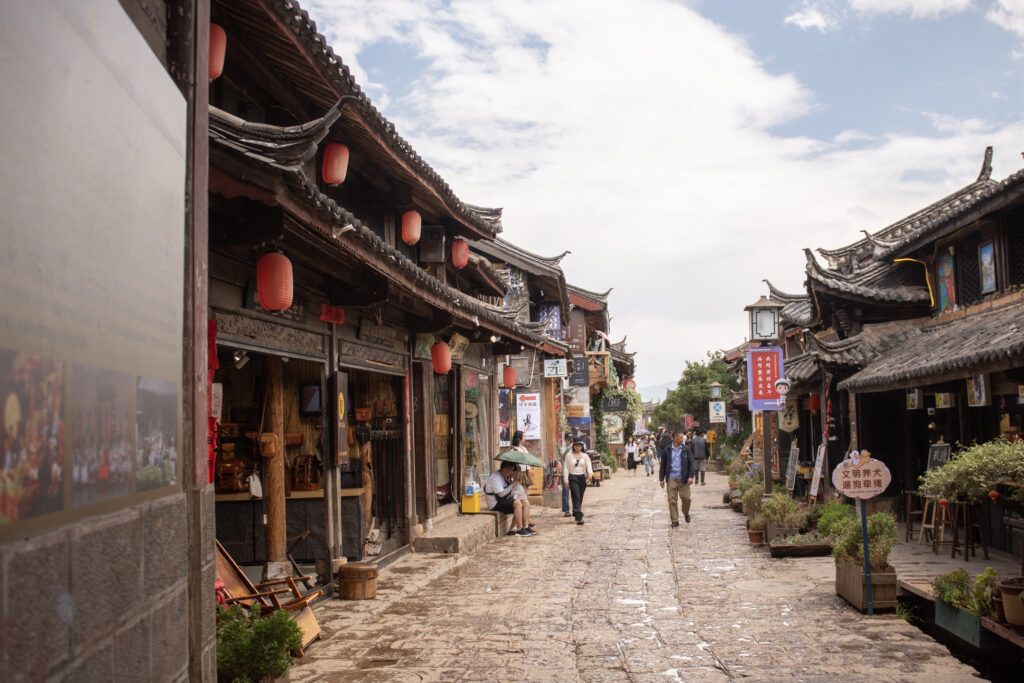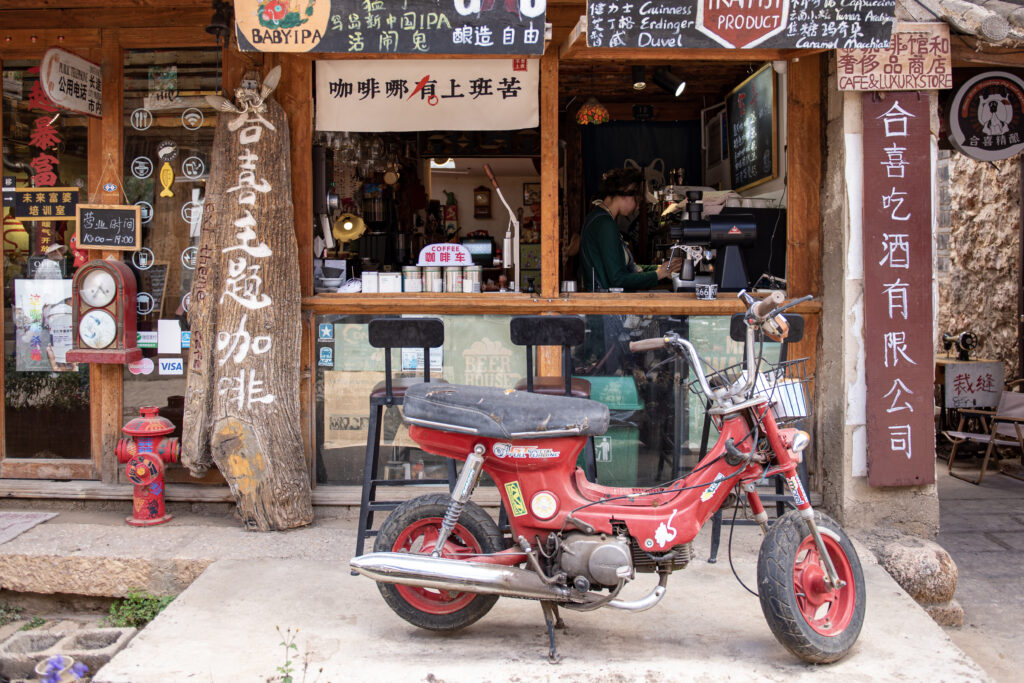June 7, 2023
Mandarin Immersion (Part 24)
By Simon J. Lau

On my last day in Lijiang, I visited Baisha Village. This was the Naxi people’s original settlement in the region, and it was an important political, social, and cultural center. It’s also famous for its murals, mostly from the Ming dynasty.


While exploring the village, I came across numerous fascinating motorcycles, particularly these retro and retro-inspired bikes. I even had a conversation with a motorcyclist from Sichuan province, who was touring southern China and had recently visited Guangzhou.
Seeing him on his touring bike made me really wish I could motorcycle across China. One of my goals is to create an itinerary where I visit many small and medium-sized cities and villages across China, photographing and writing about the people who live there. That’s something I hope to tackle soon!



I also visited a coffee shop decorated like a retro-style Japanese home, similar to the mid-century modern British-inspired version I saw earlier. It seems like these themed cafes are quite popular in China!

Finally, I thought it would be interesting to share an example of the Naxi people’s written language. While most, if not all, groups of people have a spoken language, only a small proportion have a written language. For instance, the Bai people from Dali didn’t have a written language, whereas the Naxi people did. This doesn’t necessarily imply that one group was more developed than the other, but having a written language does enable greater current and historical documentation.
In this instance, the CCP’s 12 core socialist values are translated into the Naxi language. According to a local Naxi individual I spoke with, they are still taught the Naxi language in school, both spoken and written forms. Unfortunately, there’s currently no software available to type Naxi characters in a text message or email, making it solely a handwritten language. Nevertheless, it’s fascinating to see that it’s still taught in schools, preserving this unique aspect of Naxi culture.




Comments are closed.